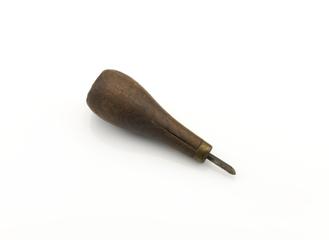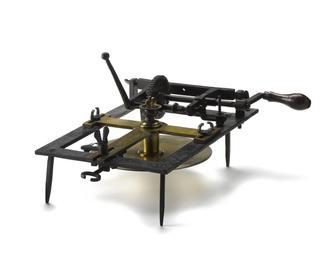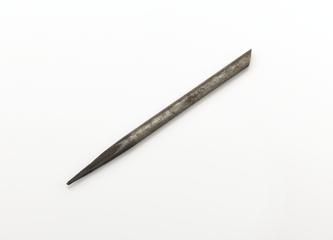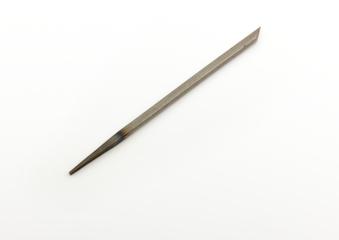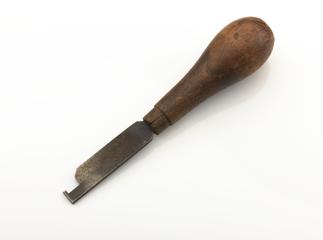

Lathe no. 2326, made by Charles Holtzapffel & Sons, London, 1877. Cast iron bed mounted on a wooden frame. Traversing head mandrel with brass cone pulley and dividing head.
The ornamental lathe or ‘rose engine’ was developed by Jacques Besson in France in about 1578. Further development in the French court followed, and ornamental turning became a pastime for the wealthy across Europe in the eighteenth century.
Charles Holtzapffel was a German lathe maker who emigrated to London in 1784. He began manufacturing ornamental lathes as precsion machines. In the nineteenth century the pastime of ornamental turning became especially popular amongst wealthy hobbyists in England.
This lathe was ordered in 1874 and was delivered to W.E. Moore, Esq. In 1877. It is described in Holtzapffel and Deyerlein’s Ledger as a 5 inch screw mandrel and it cost £240.
Details
- Category:
- Hand and Machine Tools
- Object Number:
- Y1974.33.2
- Materials:
- metal (unknown) and wood (unidentified)
- Measurements:
-
Overall: 2275 mm x 800 mm x 1080 mm,
- type:
- lathe
- credit:
- Gift of G. Cussons Ltd c/o Mr H Howarth
